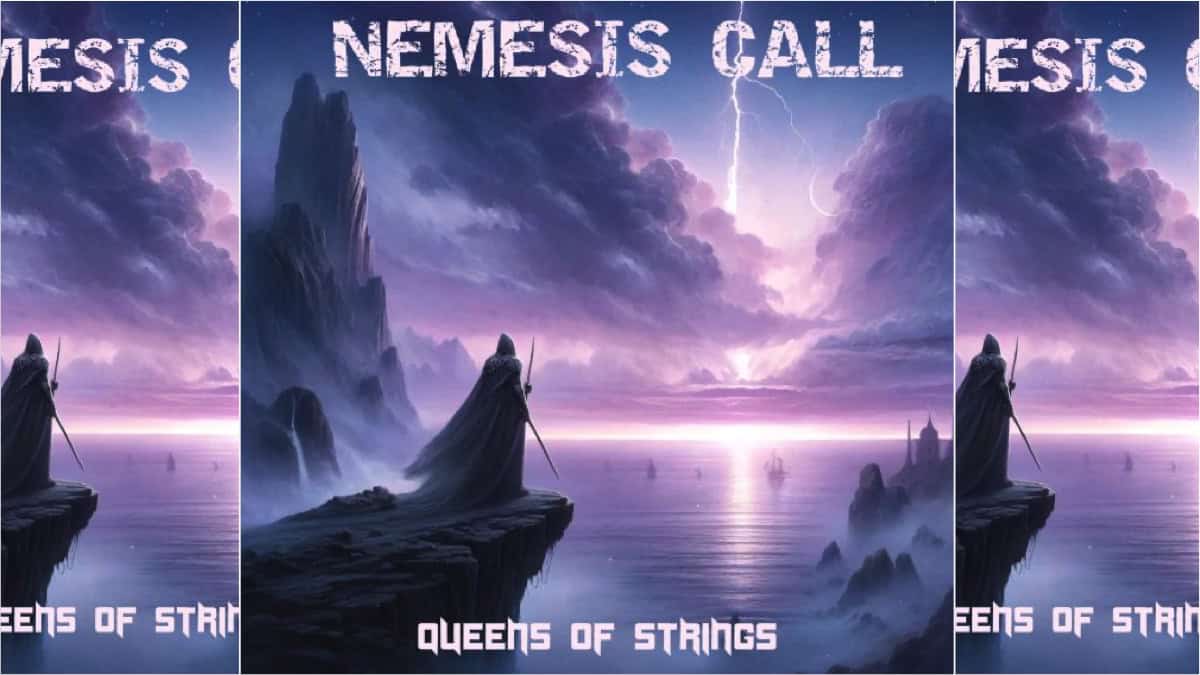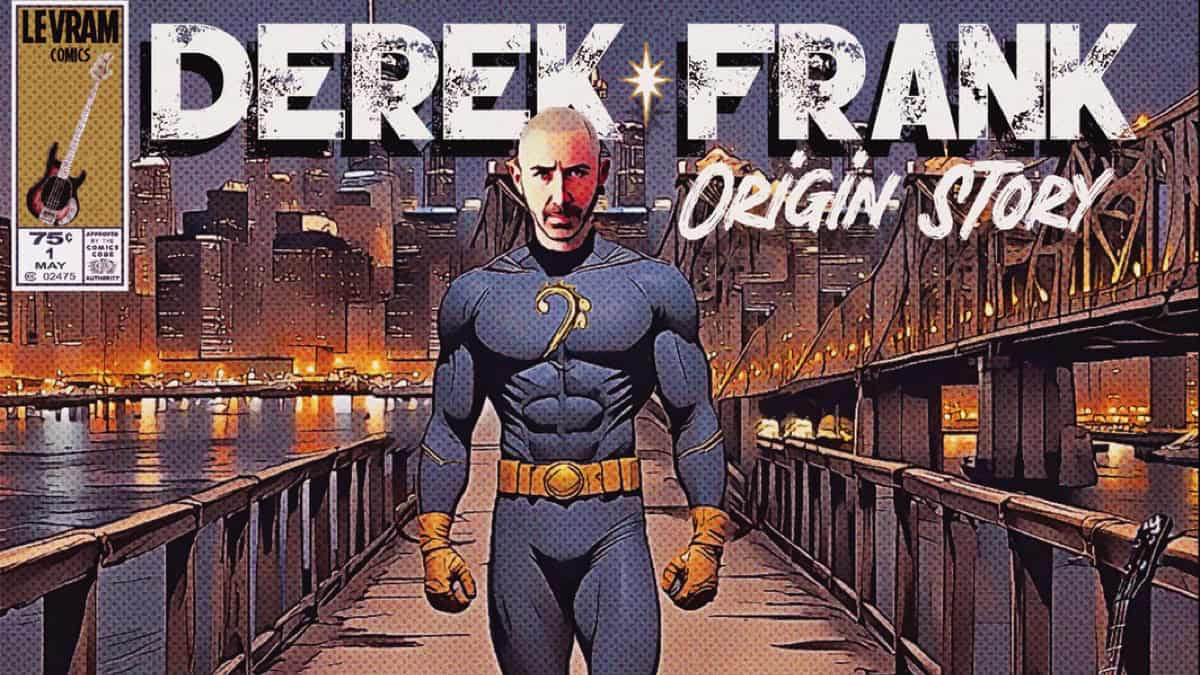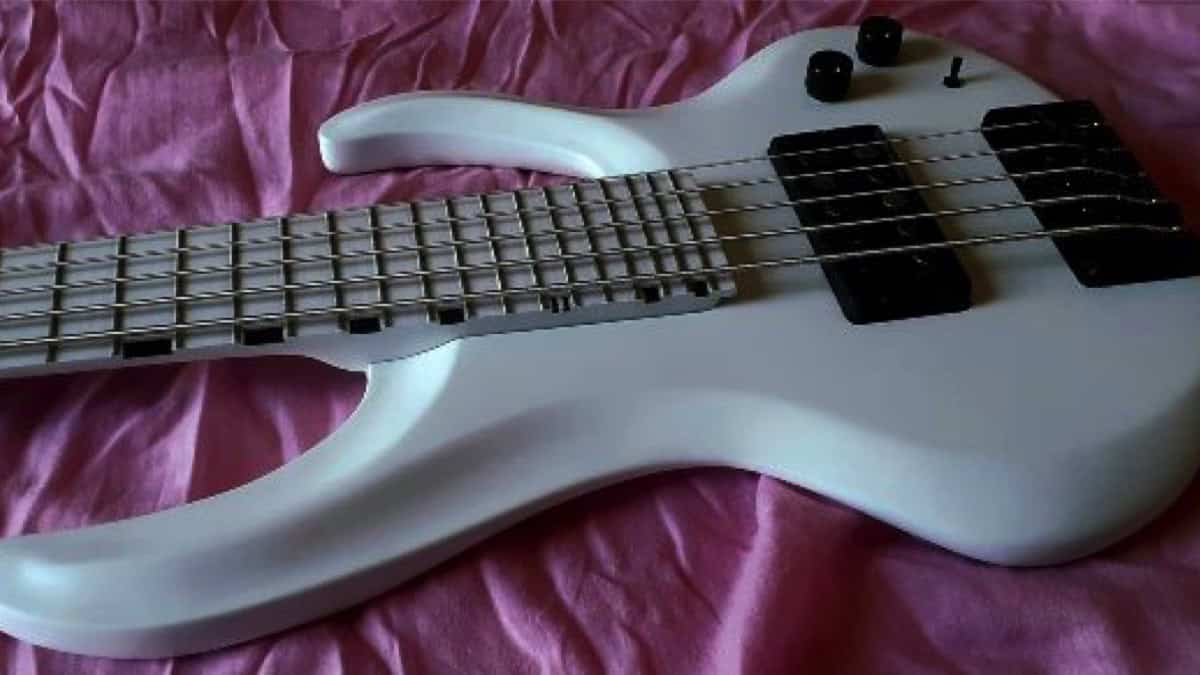Latest
McCartney’s Masterpiece: Bass on the Beatles’ Something by Rob Collier

 McCartney’s Masterpiece: Bass on the Beatles’ Something by Rob Collier… In last month’s article, I did an overview of Paul McCartney’s melodic bass lines, citing short examples from seven different songs. When making the list of songs to include in the article, “Something” was at the very top; however, I quickly decided I couldn’t just show excerpts from this song. It is one of the masterworks of rock bass lines, and it deserves to be presented in full.
McCartney’s Masterpiece: Bass on the Beatles’ Something by Rob Collier… In last month’s article, I did an overview of Paul McCartney’s melodic bass lines, citing short examples from seven different songs. When making the list of songs to include in the article, “Something” was at the very top; however, I quickly decided I couldn’t just show excerpts from this song. It is one of the masterworks of rock bass lines, and it deserves to be presented in full.
The bass line on “Something” is, in my opinion, the best that Paul ever recorded. It is one of the best bass lines ever recorded, by anyone. You just don’t hear bass lines like this very often. It is almost like a bass solo through the whole song, weaving in and out of chords. It is very active, but still manages to stay out of the way of the vocal melody (one of the nicest melodies in the Beatles catalog).
During the Abbey Road sessions, McCartney played his Rickenbacker 4001S along with a Fender Jazz Bass he had acquired during the sessions for The White Album the previous year. Several different recording engineers worked on Abbey Road, and they each favored a different method of recording the bass. Some songs on the album were recorded by placing a microphone in front of the bass cabinet, some were recorded with a DI, and some used a combination of the two. The bass on “Something” was recorded DI as an overdub, and is most likely the Jazz Bass. This recording also features a keyboard bass that occasionally doubles the electric bass in octaves or in unison.
The bass line is pretty busy during the verses. It has an orchestral quality to it—almost like a timpani part—very percussive and dramatic. In the verses, there are usually crescendos through the 16th notes on beat 2 of the C and C7 chords. Paul also plays a slight, but very natural, crescendo on the ascending line over the G chord (measures 7, 16, 34, and 43).
During the verses, McCartney isn’t sticking to a regular pattern or even a consistent rhythmic feel. He is mixing dotted quarters, quarters, eighths, and sixteenths. The sixteenths usually fall on beats 1 and 2; McCartney tends to leave a little more space on beats 3 and 4. Still, it’s not just a straight quarter note or eighth note groove—it is fairly irregular. But the other instruments are leaving plenty of space for the bass to be active. Ringo plays the sparsest backbeat imaginable with hardly any fills (a total of three fills through the first two verses!). In the first verse, there is a rhythm guitar strumming the chords and an organ that comes in midway through to play staccato chords on the Am. The strings enter at the end of the first verse, but just as sustaining chords. So in the first two verses, the only moving parts are the vocal melody and the bass. Thus, the bass functions as harmonic foundation, countermelody, and percussive drive.
As Ringo’s part becomes substantially more active during the bridge, McCartney falls into a straight eighth note pattern. It is his turn to be supportive, but he still plays an interesting descending line, moving down the A major scale, but with an E pedal at the top (see measures 21-22).
Harmonically, this song emphasizes descending voice leading. In the bridge, the bass line goes R-7-6-5-4 (with an E pedal throughout). The opening chord progression in the verse (measures 2-5) is a familiar one: I – I(maj7) – I(b7) – IV. The typical thing to do is to start on the root and descend chromatically: R-7-b7-6. This, however, is what the vocal melody is doing: C-B-Bb-A. So McCartney, rather than just having the bass mimic the vocal melody, implies a I-V-I-IV progression by playing C in measure 2, G in measure 3, C again in measure 4, and F in measure 5. Had he doubled the already prominent line, the song would have felt much more “square”; however, McCartney makes a nice choice that brings added dimension to the song.
At the end of the verse, the chord progression does the same motion but in the relative minor, A minor. This time it is twice as fast, each chord lasting two beats rather than four. So the progression is Am – Am(maj7) – Am7 – D9. McCartney applies the same concept in the minor progression as he did in the major progression. He begins on A, plays E (and then embellishes) on the first beat of the Am(maj7) chord, goes back to A on the Am7 (in the first two verses he lands on a G), and ends the progression on the root of the D9 chord.
In measure 3, Paul plays an upper neighbor tone figure (G-A-G on the “and” of beat 2) which becomes a recurring motive, appearing again in measures 5, 12, 30, and 39. It usually occurs over the Cmaj7 chord in the verses. Since the vocal melody is at rest and the bass line is the only moving part, it attracts the listener’s attention, and makes it an easily recognizable motive.
In measure 39, the motive appears for the last time. McCartney emphasizes its importance by playing it three times. The third repeat is slightly different rhythmically, being more of a grace note before an eighth (on the “and” of beat 3). But when we hear it, we still recognize it as the upper neighbor tone motive.
This motive may seem fairly insignificant, but it actually serves to support the overall harmonic structure. Let’s look at exactly how this figure functions in relation to the whole song. “Something” is in the key of C major. The bridge modulates to A major, but returns to C before the start of the guitar solo. So the entire song has a large scale C major (verse) – A major (bridge) – C major (verse) motion. But the verses also briefly move through an A tonality, this time A minor, and then return to C. So within those larger C major sections, there is a smaller C major – A minor – C major motion. This C-A-C progression is mirrored again, though not exactly, on a comparatively microscopic level with McCartney’s G-A-G neighbor tone motive. G is the fifth of a C chord, so it is the second strongest note in the chord. With the G-A-G motive, McCartney is essentially hinting at a motion from the I chord (C) to the VI (A) and back to the I (C). It is a short motive in the bass, but it slyly sets the stage for the key changes throughout the song.
Of less structural importance to the song, but interesting from the standpoint of bass line construction, Paul consistently includes an upper neighbor tone figure over the Am(maj7) in the verses (see measure 8). The descending sixteenth note run on beats 3 and 4 always starts with the notes E-F-E, or scale degrees 5-6-5 in the key of A minor. The G-A-G motive in the first part of the verses is scale degrees 5-6-5 in C major. As mentioned above, the progression Am – Am(maj7) – Am7 – D9 is the relative minor version of C – Cmaj7 – C7 – F which begins the verses. So McCartney’s 5-6-5 neighbor tone figure occurs in the same place in the minor progression as it does in the major progression: over the maj7 chord. The two versions of the neighbor tone motive, major and minor, are different rhythmically, so their similarity is not immediately apparent upon listening to the song. The connection between the two, however, is unquestionable. It is a subtle way of tying the whole bass line—and in a way, the whole song—together.
Now let’s be realistic. McCartney was certainly not thinking about this stuff in the detail I just described. He didn’t sit down and do a harmonic analysis of the song and decide how he wanted to support it. He didn’t map out which parts of the song he had space to play sixteenth note runs and in which parts he should lay back. But he did these things intuitively. The neighbor tone motive was not an accident, nor was it a coincidence each time it occurred. It was the product of a great bass player instinctively constructing a great bass line—arguably one of the best bass lines ever recorded.
Gear News
New Gear: Spector Doug Wimbish USA Custom Series Basses

Spector offers Doug Wimbish USA Custom Series basses…
Spector, a leading authority in bass guitar design, unveils two new Doug Wimbish USA Custom Series basses. Synonymous with bass excellence since 1987, Wimbish collaborated with Spector’s USA Custom Shop to create the DW-4 and DW-5 models, echoing the iconic instruments that have been favored heavily throughout his recording and performing career.
These signature basses faithfully replicate Wimbish’s originals, down to the smallest details like neck contours and nut widths. Customized EMG pickups, developed in collaboration with Wimbish, capture the distinctive sound that has shaped his monumental musical impact. These models invite players to explore the feel and response that have defined Wimbish’s signature style over the years.
Available in 4-string and 5-string versions, each model boasts unique features & finish options. The DW-4 comes in Amber Stain Gloss and Black Stain Gloss options, while the DW-5 offers Dark Blue Stain Gloss and Faded Natural Gloss. Every purchase includes a certificate of authenticity signed by Doug Wimbish. Wimbish comments, “Spector took the time to get every little nuance right, and that to me is dedication and being thoughtful enough to know ‘I want to nail it,’ and they did. I’m able to pick these instruments up for the first time and play them like I’ve already had them for years.”
For more information, visit spectorbass.com/doug-wimbish-usa-signature-series/.
Photo: Doug Wimbish, pictured with the new Spector Doug Wimbish USA Custom Series basses
Bass CDs
New Campaign: Alberto Rigoni, Nemesis Call – Queens Of Strings

Italian bass master and composer ALBERTO RIGONI is thrilled to announce his brand new project “Nemesis Call – Queens Of Strings”.
Nemesis Call – Queens Of Strings features a super talented drummer from Japan (TBA) and tons of female guitarists such as SAKI, Giusy Busetto, Alexandra Zerner (TBC) and many many others (TBA). Furthermore, Alberto has also launched a Fundraising Campaign for the project. 20% of the income will be donated to Lega del Filo d’Oro legadelfilodoro.it/it, an Italian association that helps deaf and blind children!
Alberto shares:
“Hello friends and music lovers! I’m Alberto Rigoni, an Italian composer and.. a BASS GUY! Between 2008 and 2024 I released 13 solo albums, spanning from progressive, rock, ambient to funky and experimental music, which also features contributions from musicians such as keyboard wizard Jordan Rudess (Dream Theater) drummer Gavin Harrison (Porcupine Tree) and Marco Minnemann (the Aristocrats), keyboardist Kevin Moore (ex Dream Theater), singer John Jeff Soto (ex Goran Edman (ex Y. Malmsteen), bassists Nathan East, Stu Hamm (Joe Satriani), Nik West (ex Prince) and many others. I’m also bass player for BAD As, Sunset Groove Society, Kim Bingham, The Italians bands and co-producer of Mistheria’s Vivaldi Metal Project.”
Alberto on the new project Nemesis Call:
“Even if my latest album “Unexpected Lullabies”, dedicated to my newborn Vittoria Parini Rigoni, will be released on June 4th, 2024, when Vittoria came to life I felt the need to compose new music (yes, I really can’t stop!!!!!). This time will be quite challenging because I’m willing to release an instrumental ambient/prog/rock/metal album, that will feature a talented and young drummer (TBA) and tons of female guitarists (that’s why I will call the album “Queens of the Strings”) such as Alexandra Zerner, YOKA and many others (TBA/TBC)). It won’t be easy to manage all such great musicians but I will make it!! Are you ready to face a new prog experience? The album will be released in Digipack CD and in high-quality digital format approximately at the beginning of 2025.”
The Fundraising Campaign:
As an independent artist, Alberto is looking for supporters who can help him reach the budget for the production (recordings, mix, mastering, artwork etc.) of this new album and has started this fundraising campaign that will end successfully on October 15th, 2024.
Get further information about Alberto Rigoni’s new project Nemesis Call Fundraising campaign at albertorigoni.net/nemesiscal
Bass Videos
Artist Update With Bassist Derek Frank

Bassist Derek Frank…
Many of you will remember the last time I chatted with Derek Frank was back in 2017. The main thing that impressed me was how busy Derek was and how he juggled playing with many huge acts.
Now, I am happy to hear that Derek launched a new album last March titled “Origin Story” where he digs deep into his roots and pays homage to Pittsburg.
Join me as we get caught up after all these years and hear the details about the new album, how Derek gets his sound, and his plans for the future.
Photo, Stephen Bradley
Featured Videos:
Visit Online:
www.derekfrank.com
www.instagram.com/derekfrankbass
www.youtube.com/derekfrankbass
www.facebook.com/derekfrankbass
Latest
This Week’s Top 10 Basses on Instagram

Check out our top 10 favorite basses on Instagram this week…
Click to follow Bass Musician on Instagram @bassmusicianmag
FEATURED @foderaguitars @bqwbassguitar @lecomptebass @xvector_basses @vuorensaku_guitars @phdbassguitars @meridian_guitars @sterlingbymusicman @ramabass.ok @overwaterbasses
Gear News
New Gear: Alberto Rigoni Signature Bass, the VPR5 by Gaetano Costanzo!

Alberto Rigoni Signature Bass, the VPR5 by Gaetano Costanzo!
Internationally renowned bassist ALBERTO RIGONI (soloist, BAD AS, Vivaldi Metal Project, TwinSpirits, etc.) is proud to announce the release of his signature bass VPR5 made by renowned Italian luthier Gaetano Costanzo!
The bass is entirely handmade in Italy, without the use of CNC or other machinery, and has rather special features. The VPR is a 5-string bass (but also available as a 4-string) with 30 frets, Seymour Duncan pickups, Music Man Alnico style, passive electronics (volume, tone and a switch to select series/parallel/single-coil mode), alder body, and American maple neck and fingerboard. Gotoh tuners that ensure perfect intonation. The bass is totally painted white (nitro finish) but other colors can be requested. The VPR has a weight of about 2.9 kg and suitable for any genre.
For more information contact Gaetanobass77@gmail.com or visit online at www.instagram.com/gaetanocostanzoluthier or www.facebook.com/GaetanoCostanzoLuthier











